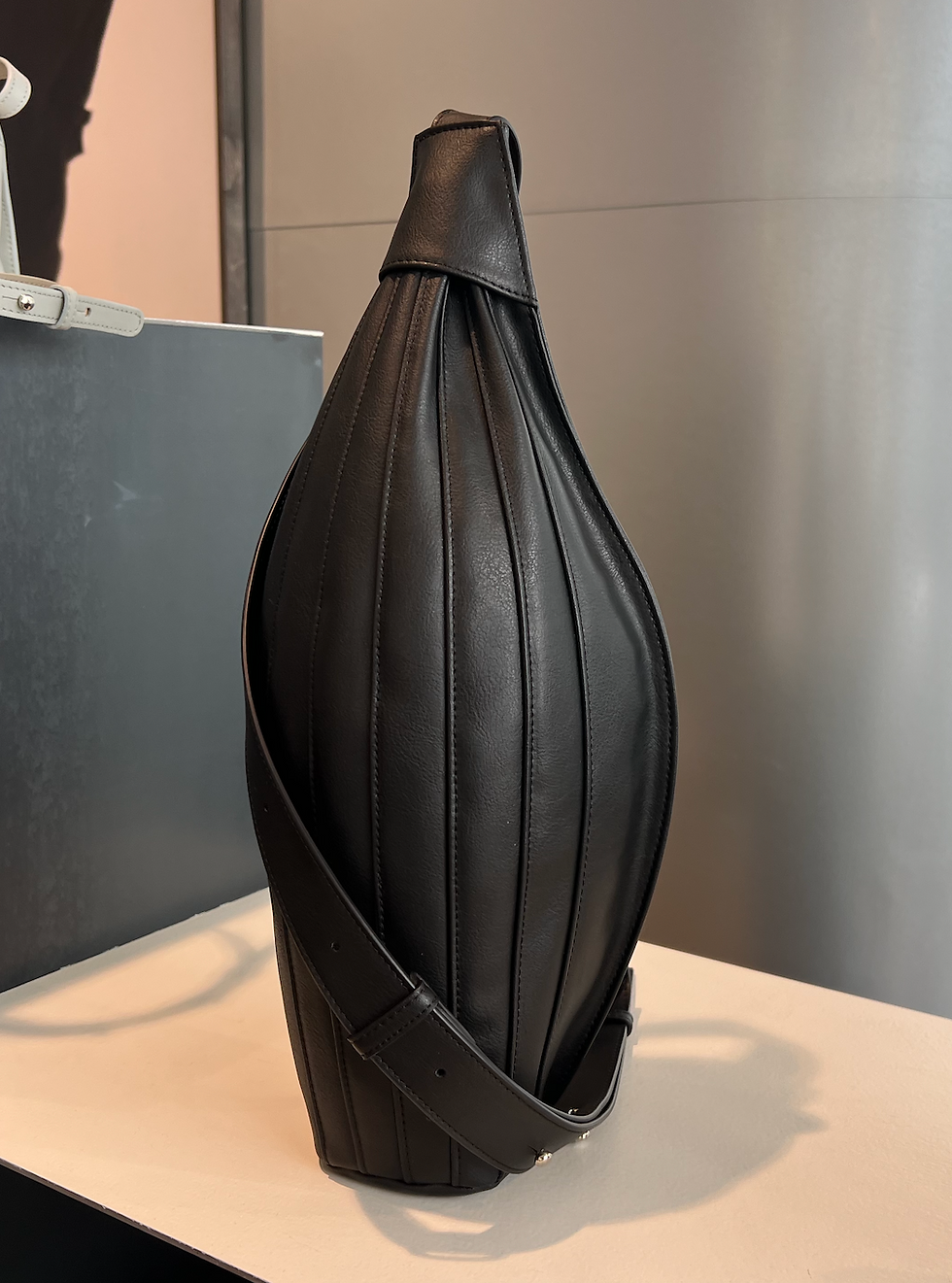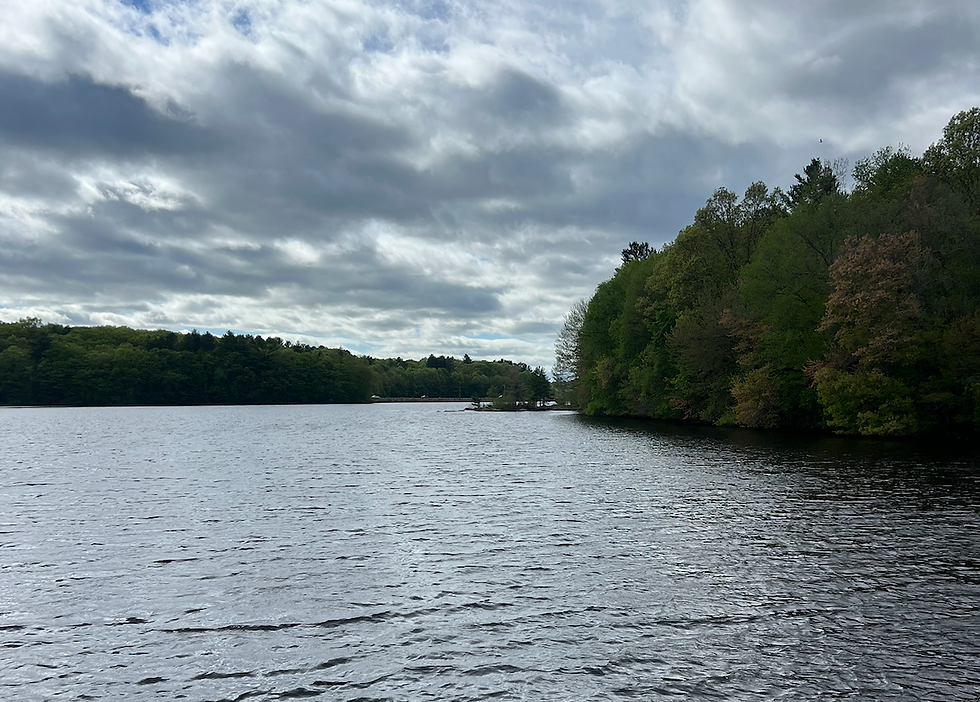Searching for Sustainability in Fashion (A 4 Days Trip in Antwerp)
- Isabelle lee
- Aug 17
- 4 min read
Updated: Oct 29
Why Antwerp?

When I set out to explore the meaning of sustainability in fashion, Antwerp immediately caught my eye. The city’s fashion history is deeply tied to the Antwerp Six, a group of visionary designers from the Royal Academy of Fine Arts who put Antwerp on the global fashion map. Beyond the runways, I wanted to see how sustainability manifests in real life by visiting shops, museums, and engaging in conversations with designers.
Day 1 – First Impressions & Museum Hopping
I arrived the night before with my mom, dragging two large suitcases from Antwerp Central Station to our Airbnb, a 15-minute trek made trickier by cobblestone streets.
The next morning, I met Isabel from COSH!, the company that helped plan my tour, at the MOMU Fashion Museum. Over coffee at the museum café, she briefed me on the schedule for my tour. Most of my exploration would be unguided, with my mom and I visiting and interviewing shopkeepers on our own.


Inside MOMU, I dove into the permanent Antwerp Six exhibition, studying recurring motifs and the artistry behind them. I also visited the Jan-Jan Van Essche showcase, a collection that proved minimalism can be just as captivating as avant-garde designs when craftsmanship is thoughtful and precise.



Later, the Fashion & Interiors: A Gendered Affair exhibit offered a mix of perspectives, but my highlight was the recreated Maison Margiela workspace, all white, a striking tribute to the designer’s process.

After lunch in Antwerp’s Old Town, we wandered through boutique-lined streets. One African store stood out, selling handwoven baskets, rugs, and stools sourced directly from artisans in Kenya. It was a reminder that sustainability can take many shapes, from material choices to the cultural stories behind them.


Day 2 – Slow Fashion, Thrifting, & Creative Upcycling

The morning began with an interview at Abelone Wilhelmsen’s boutique. Abelone is a slow fashion designer who works with locally produced textiles, values transparency, and uses natural dyes made from fungi in partnership with Fabulous Fungi. Unlike synthetic dyes that harm waterways, these dyes are eco-friendly, though their colors naturally fade over time, making each garment unique.

Strolling through the city, I discovered a thrift shop where clothes were sold by the kilo, a fun brand-agnostic approach to second-hand shopping. Even shops selling new items often had curated second-hand sections, showing that sustainability in Antwerp is a cultural norm rather than a niche movement.

The COSH! The route led me to REST, an upcycling center reimagining everything from fabric scraps to dried markers (turned into spray paint). The owner’s words stuck with me: “Since every item has already left a dent on the climate, we should honor it and give it a second life.”

My last stop was Dressr, a clothing rental service featuring only local designers. Among the racks were Abelone pieces and upcycled jackets, plus accessories made from unlikely materials like soda can tops, each with a story.
Day 3 – Sustainability in Every Corner

With Isabel, I visited Binti, another African-sourced fashion store, followed by Moose in the City, a concept store with a sustainability index to track and evaluate brands. Their motto resonated deeply:
“We don’t need a handful of people doing zero waste perfectly. We need millions of people doing it imperfectly.”

From there, we explored a zero-waste grocery store, where customers refill everything from pasta to dish soap. It made me realize that packaging in fashion, especially in e-commerce, is just as important to address.


Lies Mertens was the final standout, a handbag brand using leather alternatives made from grapes and fungi, offering vegan options without synthetic plastics. While innovative materials are exciting, this visit also made me rethink my focus; sustainability isn’t just about what we use, but how we use it.
Day 4 – Rethinking Fabric Choices

My interview at Bakermat, a textile store with a digital fabric library, was a turning point. They encouraged designers to weigh not just a material’s eco-credentials but also its full life cycle. For example, upcycled Japanese denim sounds sustainable, but the carbon footprint of flying it overseas can outweigh its benefits compared to locally produced fabrics.
They also cautioned against assuming that every innovative fabric is better; even seaweed-based textiles, if mass-produced, can become resource-intensive. The lesson? Sustainability requires holistic thinking.

That afternoon, I returned to MOMU to browse archival pieces made from banana fiber, hay, and hand-spun cotton, then visited Fashion Revolution Antwerp to talk about grassroots change. They reminded me that even as a high schooler, my efforts can ripple outward.

Final Thoughts
Four days in Antwerp didn’t give me a perfect definition of sustainability in fashion, but it gave me something better: a layered understanding. Sustainability isn’t a single practice or material; it’s a mindset. It’s about valuing what we own, giving items a second life, and making thoughtful choices at every step of the process.
Antwerp taught me that fashion’s future doesn’t have to be fast and that meaningful change often starts in the smallest details.
If you're here till the end, thanks for listening, and see you next time!


Comments